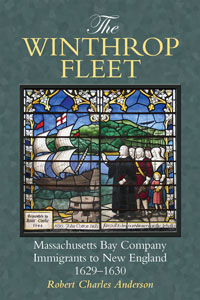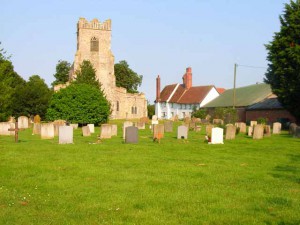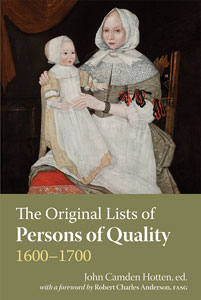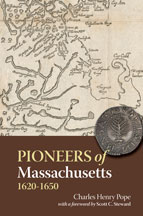 The activities of the Massachusetts Bay Company in 1629-30 were uniformly organized from the top down. The Company either purchased or hired the vessels to carry the passengers and provisions. The passengers themselves, and especially the critically important professionals such as ministers and soldiers, were recruited by the Company leaders. Continue reading The Great Migration: Top-down, bottom-up
The activities of the Massachusetts Bay Company in 1629-30 were uniformly organized from the top down. The Company either purchased or hired the vessels to carry the passengers and provisions. The passengers themselves, and especially the critically important professionals such as ministers and soldiers, were recruited by the Company leaders. Continue reading The Great Migration: Top-down, bottom-up
Tag Archives: Great Migration Study Project
“Between the bark and the tree”: ‘The Winthrop Woman,’ 1629

As I delve further into the Winthrop Papers, I am finding interesting asides about the relationships within the Winthrop family. Like his father, Governor John1 Winthrop (1588–1649) remained close to his “brothers” and “sisters,” such as Thomas Fones (d. 1629), the widower of Winthrop’s sister Anne, and Thomas’ second wife, Priscilla (Burgess) (Sherman) (Fones) Paynter, the future governor’s “verye louinge sister Mrs. Fones.” Continue reading “Between the bark and the tree”: ‘The Winthrop Woman,’ 1629
Ships of the Winthrop Migration, 1629-1630
The Massachusetts Bay Company arranged for six vessels to sail for New England in 1629, only five of which reached their destination. The salient details for each of these sailings are summarized below:
George Bonaventure, Thomas Cox, master. She left the Isle of Wight 4 May 1629, and probably reached Salem during the first half of July. Samuel Sharp and the Rev. Samuel Skelton were two of the passengers. Continue reading Ships of the Winthrop Migration, 1629-1630
Assorted populations of the Great Migration
 While the majority of the immigrants to New England between 1620 and 1640 were Puritans of some variety, a minority were conventional, conforming members of the Church of England, or of no particular religious persuasion at all. For example, West Country fishermen created settlements in Monhegan, Casco, and Richmond Island during the 1620s and early 1630s, accounting for (roughly) one thousand immigrants, or about five percent of the whole Great Migration. Continue reading Assorted populations of the Great Migration
While the majority of the immigrants to New England between 1620 and 1640 were Puritans of some variety, a minority were conventional, conforming members of the Church of England, or of no particular religious persuasion at all. For example, West Country fishermen created settlements in Monhegan, Casco, and Richmond Island during the 1620s and early 1630s, accounting for (roughly) one thousand immigrants, or about five percent of the whole Great Migration. Continue reading Assorted populations of the Great Migration
Picking families for the Early New England Families Study Project
 My father, borrowing a line from Henry Ford, used to tease me that I could pick any color apple I wanted in the basket “as long as it was red.” (They were all red.) I have been asked to explain how I choose which families to do for the Early New England Families Study Project. The answer is I can pick any family I want – once they are in the basket. Continue reading Picking families for the Early New England Families Study Project
My father, borrowing a line from Henry Ford, used to tease me that I could pick any color apple I wanted in the basket “as long as it was red.” (They were all red.) I have been asked to explain how I choose which families to do for the Early New England Families Study Project. The answer is I can pick any family I want – once they are in the basket. Continue reading Picking families for the Early New England Families Study Project
Musings on seventeenth-century Puritans
 Lately, I have been reading Tom Webster’s Godly Clergy in Early Stuart England: The Caroline Puritan Movement, c.1620-1643. Much of this volume is built around Thomas Hooker’s time in Chelmsford, Essex, in the late 1620s. One of my goals is to document in detail and with precision these years in Hooker’s life, a period in which he was lecturer at Chelmsford, school teacher at Great Baddow, and a leading influence on the development of young ministers of Puritan inclinations in East Anglia.
Lately, I have been reading Tom Webster’s Godly Clergy in Early Stuart England: The Caroline Puritan Movement, c.1620-1643. Much of this volume is built around Thomas Hooker’s time in Chelmsford, Essex, in the late 1620s. One of my goals is to document in detail and with precision these years in Hooker’s life, a period in which he was lecturer at Chelmsford, school teacher at Great Baddow, and a leading influence on the development of young ministers of Puritan inclinations in East Anglia.
Much has been written about Hooker at this stage of his life, some of it from Cotton Mather’s Magnalia Christi Americana, not the most reliable of sources. Modern historians make repeated reference to the “household seminary” run by Hooker, and I am concerned that this aspect of Hooker’s career has been distorted by the way Mather presented his information. A fair portion of my research trip to England in the fall will be devoted to collecting copies of all the original sources for Hooker’s life in Essex, and reading Webster’s book is part of the preparation for that research. Continue reading Musings on seventeenth-century Puritans
English port lists of the 1630s
 John Camden Hotten first published The Original Lists of Persons of Quality – his compilation of documents relating to seventeenth-century migration to New England, the Chesapeake, and the Caribbean – more than a century and a quarter ago, and it remains one of our most valuable and accurate sources for that period. He included in the volume the surviving records from the London Port Books, along with lists from some of the English outports. In addition, he included some muster rolls from Virginia, and other items listing early settlers there. Continue reading English port lists of the 1630s
John Camden Hotten first published The Original Lists of Persons of Quality – his compilation of documents relating to seventeenth-century migration to New England, the Chesapeake, and the Caribbean – more than a century and a quarter ago, and it remains one of our most valuable and accurate sources for that period. He included in the volume the surviving records from the London Port Books, along with lists from some of the English outports. In addition, he included some muster rolls from Virginia, and other items listing early settlers there. Continue reading English port lists of the 1630s
The Well-Stocked Genealogical Library
 To be complete, the well-stocked genealogical library should include general works on our research interests. Biographical dictionaries and other compendia are useful for looking at our ancestors’ contemporaries and their activities; they often provide clues for specific queries when the record in any one case is lacking, sending us off to an overlooked source or locality where the trail seemed cold. Continue reading The Well-Stocked Genealogical Library
To be complete, the well-stocked genealogical library should include general works on our research interests. Biographical dictionaries and other compendia are useful for looking at our ancestors’ contemporaries and their activities; they often provide clues for specific queries when the record in any one case is lacking, sending us off to an overlooked source or locality where the trail seemed cold. Continue reading The Well-Stocked Genealogical Library
Deep Puritan Roots
 On a recent trip to Salt Lake City, I took along a list of questions to work on. I hoped to demonstrate directly that Alexander Nowell, the prominent English Puritan, actually had interactions with his grandnephew, Increase Nowell of Charlestown, Massachusetts (1593-1655), who was about nine years old when Alexander died in 1602. My first step was to locate and read Alexander’s will.
On a recent trip to Salt Lake City, I took along a list of questions to work on. I hoped to demonstrate directly that Alexander Nowell, the prominent English Puritan, actually had interactions with his grandnephew, Increase Nowell of Charlestown, Massachusetts (1593-1655), who was about nine years old when Alexander died in 1602. My first step was to locate and read Alexander’s will.
There was nothing there about Increase, but the will included a lengthy codicil dedicated to the estate of John Deane of Great Maplestead, Essex. In 1585, Alexander was appointed guardian to young John, who was born about 1583. At the time of Alexander’s will, about twenty years later, John would have just reached his majority. I think I must have read Alexander’s will many years ago, but this connection had not then meant anything to me. Continue reading Deep Puritan Roots